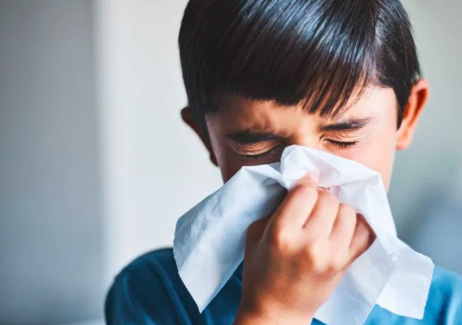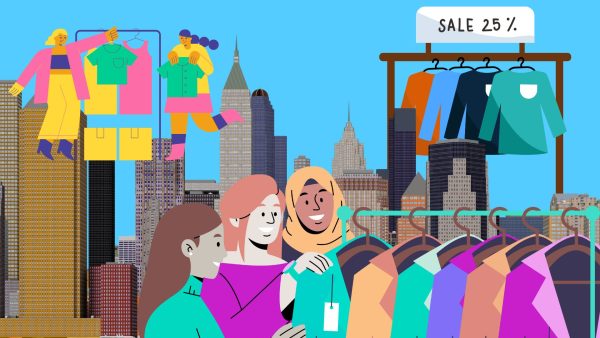How Do We Assess Risk?
Novel Coronavirus vs. Seasonal Flu

This photo is courtesy of motherjones.com
Every year, millions of people run to their local pharmacy for vaccinations, in fear of falling ill with a miserable fever. This rapidly spreading virus has infected up to 26,000,000 people and has caused up to 25,000 deaths according to the Centers for Disease Control and Prevention. This virus is the seasonal flu, which affects more and more people every fall.
The flu is not the only villain this year. Wuhan, China is the focal point of the novel respiratory illness, coronavirus, which is believed to be associated with the seafood and poultry markets in Wuhan. By the time people started falling ill with the symptoms of fever, cough, and shortness of breath, the virus had already spread globally.
In early December of 2019, the first case of the coronavirus appeared at a hospital in Wuhan. However, the Chinese government did not act quickly on the threat because they thought it would be easily contained. By mid- January, cases of this virus began popping up all over Wuhan. People traveling out of the city to other countries unknowingly spread it before any prevention action could be taken. The public had already absorbed a common fear of this virus.
A post from the Centers for Disease Control and Prevention circulated on social media platforms, informing the public of the imminent danger and how to avoid spreading germs. Although this informational post can be seen as helpful, it can also raise more fear in the public because of the unknown risk factors. Unlike the flu, a domestic and seasonal virus in the United States, the coronavirus evolved internationally. For many people, the thought of an unknown disease causes immediate fear.
As of now, according to CNN live coverage, the virus has infected 40,700 people across 25 countries and has killed at least 1,000 people (the numbers of those affected are growing everyday). The United States has put major precautions in place to keep the threat of an epidemic at bay. Airports have set up quarantine stations to screen people who get off planes from Wuhan to make sure they are not carriers of the coronavirus. Public officials have been keeping the people updated on the threat to their local communities. In New York City, Mayor De Blasio held a press conference to alert the public that the risk of infection in the city is relatively low at the moment.
“Do the basics, like wash your hands,” de Blasio said. New Yorkers can “go about their lives normally,” but they should also be aware that germs are everywhere. The protocol is just like the standards we follow during the flu season. It is important to wash your hands, sneeze, and cough into your arm, and try to stay healthy. Unlike the flu, Americans are uneasy about the coronavirus because it is inexorably spreading in China.
Professor Doherty, who has a Ph.D. in Health Communication from Purdue University and teaches courses such as “Health Communication and Promotion” in the Marymount Manhattan College Communication department, sheds some light on the fear factors associated with the coronavirus and how the media portrays it. “I think fear of the illness is caused by a wide variety of factors, but the 24-hour news cycle and the ambiguity of the unknown are certainly two of the big ones,” Professor Doherty explains. It can be rather unnerving to constantly be updated that more people are being infected and dying in another country by a virus that was previously unknown to the general public. The ambiguity of an epidemic can unleash pandemonium.
“Because this coronavirus is novel, there are a lot of unknowns and it’s a constantly evolving situation,” Professor Doherty points out. Health care professionals and scientists are still trying to find a cure for this virus, so the public eagerly awaits an answer when it is still in the early stages. “When no one really has the full facts yet, but the media and the public are very eager for information, speculation and fear can often result,” Doherty concludes.
In this time of uncertainty, it is also important to be aware of the symptoms and how to prevent the spread of disease. Everyone assesses risk differently, “but the news coverage certainly influences our assessment of the risk associated with coronavirus,” Professor Doherty explains. There has been increasing concern of racism and xenophobia with the spread of the coronavirus. Particularly on social media, there is documentation of people purposely avoiding others or even confronting others because of the coronavirus.
People around the globe have been starting their own crusades to end these acts of hate and ignorance. For instance, in France, the hashtag #JeNeSuisPasUnVirus meaning ‘I Am Not A Virus,’ has gone viral to counter racism and prejudice against Asians on social media. However, spiteful reactions to novel viruses are not exclusive to coronavirus. During SARS and Ebola outbreaks, people reacted to the fear of disease based on their pre-existing prejudices. Unfortunately, there seems to be a systematic need to blame a group of people close to the epicenter of the outbreak when epidemics occur. On the more extreme end of reactions to the outbreak, the University of California, Berkeley, posted a photo on Instagram listing the “Common Reactions” to the coronavirus. This could have been an opportunity for the university to spread knowledge on the topic, but they listed xenophobia as a common reaction. Backlash soon followed from students, questioning the wording by the university. UC Berkeley deleted the post and apologized for the language used in the post.
“We regret any misunderstanding it may have caused and have updated the language in our materials,” they wrote responding to the uproar. “Social media can make it easier for misinformation and rumors to spread, which is why it’s so important to always critically evaluate the information you encounter online,” Professor Doherty highlights.
Fake news and rumors only exacerbate a situation when there are already many unheard people involved. There have been countless stories told via Twitter and Instagram where innocent bystanders are accused of having the coronavirus because of their race. The next steps in this situation are to find a cure for the disease and to help those with the symptoms receive proper treatment. As Professor Doherty articulated, it is important to evaluate the news and seek the facts yourself before posting inaccurate information. The resources are readily available through the CDC. In addition to the viral post from the CDC, they also update their website everyday with more information on the case.
The outbreak is being closely monitored and the importance of finding a way to stop the spread of the illness and to stop the spread of misrepresentation is key to this organization.
For accurate updates and more information on the coronavirus, visit cdc.gov. It is crucial to stay informed and vigilant.






